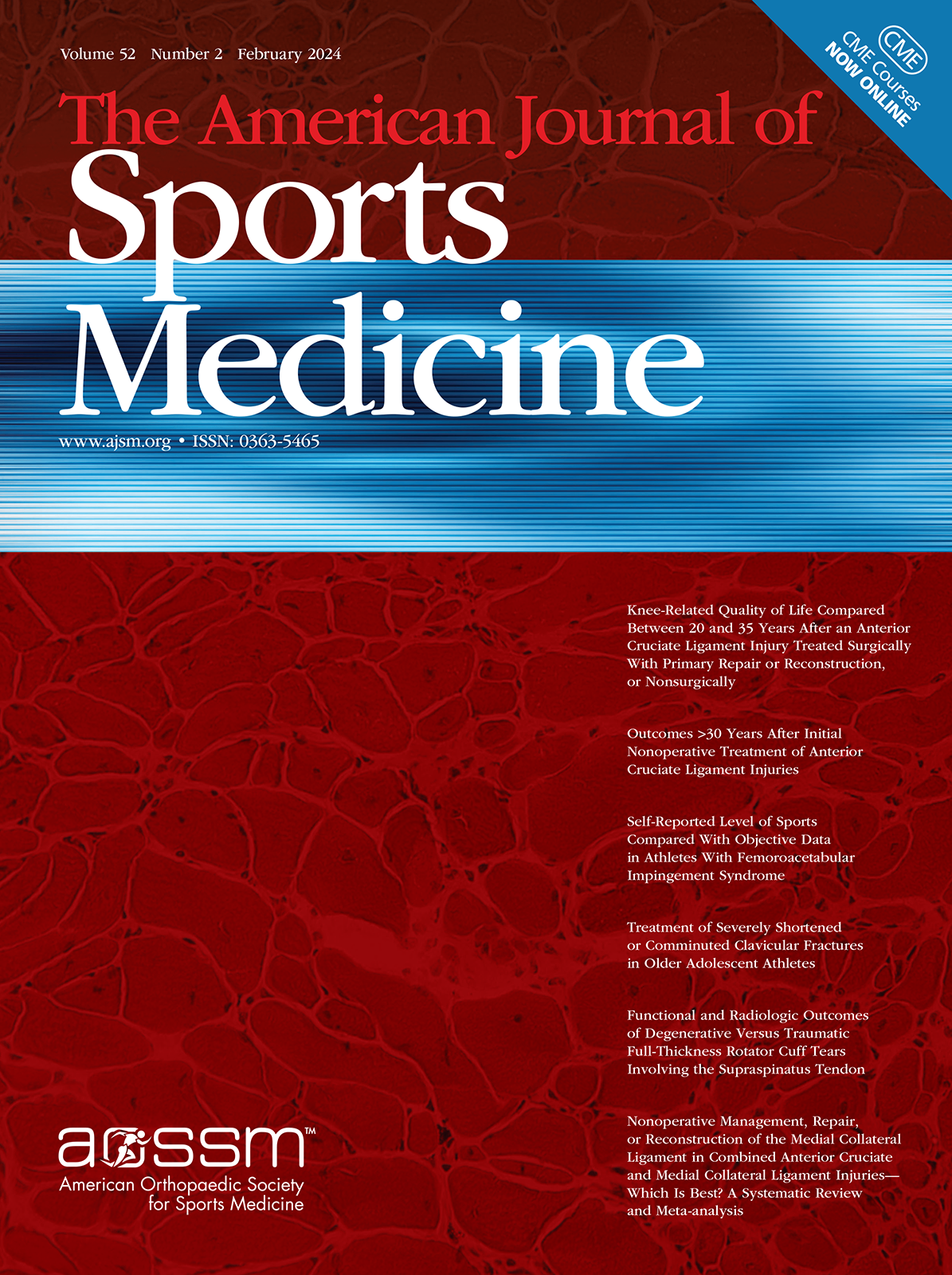
Skin-derived tenocyte-like cells for patellar tendinopathy improves pain and function

Skin-derived tenocyte-like cells for patellar tendinopathy improves pain and function
Skin-derived tenocyte-like cells for the treatment of patellar tendinopathy
Am J Sports Med. 2011 Mar;39(3):614-23. doi: 10.1177/0363546510387095. Epub 2010 Dec 7Did you know you're eligible to earn 0.5 CME credits for reading this report? Click Here
Synopsis
46 patients (60 patellar tendons) were randomized to assess the efficacy of ultrasound-guided injection of autologous skin-derived, tenocyte-like cells in treating refractory patellar tendinosis. Patients received either injection with collagen-producing cells suspended in autologous plasma or injection with autologous plasma alone (control). The assessment at 6 months indicated that ultrasound-guided injection of autologous skin-derived tendon-like cells led to a significantly greater improvement in pain and function in comparison to control injections.
Was the allocation sequence adequately generated?
Was allocation adequately concealed?
Blinding Treatment Providers: Was knowledge of the allocated interventions adequately prevented?
Blinding Outcome Assessors: Was knowledge of the allocated interventions adequately prevented?
Blinding Patients: Was knowledge of the allocated interventions adequately prevented?
Was loss to follow-up (missing outcome data) infrequent?
Are reports of the study free of suggestion of selective outcome reporting?
Were outcomes objective, patient-important and assessed in a manner to limit bias (ie. duplicate assessors, Independent assessors)?
Was the sample size sufficiently large to assure a balance of prognosis and sufficiently large number of outcome events?
Was investigator expertise/experience with both treatment and control techniques likely the same (ie.were criteria for surgeon participation/expertise provided)?
Yes = 1
Uncertain = 0.5
Not Relevant = 0
No = 0
The Reporting Criteria Assessment evaluates the transparency with which authors report the methodological and trial characteristics of the trial within the publication. The assessment is divided into five categories which are presented below.
4/4
Randomization
3/4
Outcome Measurements
3/4
Inclusion / Exclusion
4/4
Therapy Description
4/4
Statistics
Detsky AS, Naylor CD, O'Rourke K, McGeer AJ, L'Abbé KA. J Clin Epidemiol. 1992;45:255-65
The Fragility Index is a tool that aids in the interpretation of significant findings, providing a measure of strength for a result. The Fragility Index represents the number of consecutive events that need to be added to a dichotomous outcome to make the finding no longer significant. A small number represents a weaker finding and a large number represents a stronger finding.
Why was this study needed now?
The optimal treatment method, whether surgical or nonoperative, for patellar tendinopathy remains unclear. Recently, there has been an increasing focus on ultrasound-guided interventional procedures for the treatment of patellar tendinopathy. For example, the use of tissue engineering (using stem cells) has led to tendon regeneration in animal studies. However, there is uncertainty regarding the type of cell and tissue source that should be used to produce optimal results. Therefore, this study aimed to assess the efficacy of ultrasound-guided injection of autologous skin-derived, tenocyte-like cells in treating refractory patellar tendinosis.
What was the principal research question?
Was the ultrasound-guided injection of autologous skin-derived, tenocyte-like cells more effective in treating patellar tendinopathy in comparison to injection with plasma alone, assessed at 6 months?
What were the important findings?
- After 6 months, there was a greater improvement in VISA scores for the cell group (44 +/- 15 to 75 +/- 17) when compared to the plasma group (50 +/- 18 to 70 +/- 14); the mean difference was 8.1 (95% CI, 2.4 to 13.7; P = 0.006).
- The cell group demonstrated significantly faster improvement and a highly significant effect of treatment in comparison to the plasma group, with the between-group difference estimated as 2.5 per unit increase in 1/square-root of time (95% CI, 0.9 to 4.1; P = 0.002).
- In respect to changes in ultrasound appearances, both groups revealed a significant decrease in hypoechogenicity and tear size (both P < 0.05); however, no significant difference was observed for neovascularity (cell group: P = 0.7248; plasma group: P = 0.6508), while a significant decrease in tendon thickness was observed only for the cell group (P = 0.0072).
What should I remember most?
Ultrasound-guided injection of autologous skin-derived, tenocyte-like cells was more effective in improving pain and function in comparison to control injections with plasma alone.
How will this affect the care of my patients?
This study suggests that ultrasound-guided injections of skin-derived collagen-producing cells are safe and effective in the short-term for the treatment of patellar tendinopathy. Future research is required to further evaluate the application of this technique, including the number of injections and use in other tendon overuse conditions.
Learn about our AI Driven
High Impact Search Feature
Our AI driven High Impact metric calculates the impact an article will have by considering both the publishing journal and the content of the article itself. Built using the latest advances in natural language processing, OE High Impact predicts an article’s future number of citations better than impact factor alone.
Continue



 LOGIN
LOGIN

Join the Conversation
Please Login or Join to leave comments.